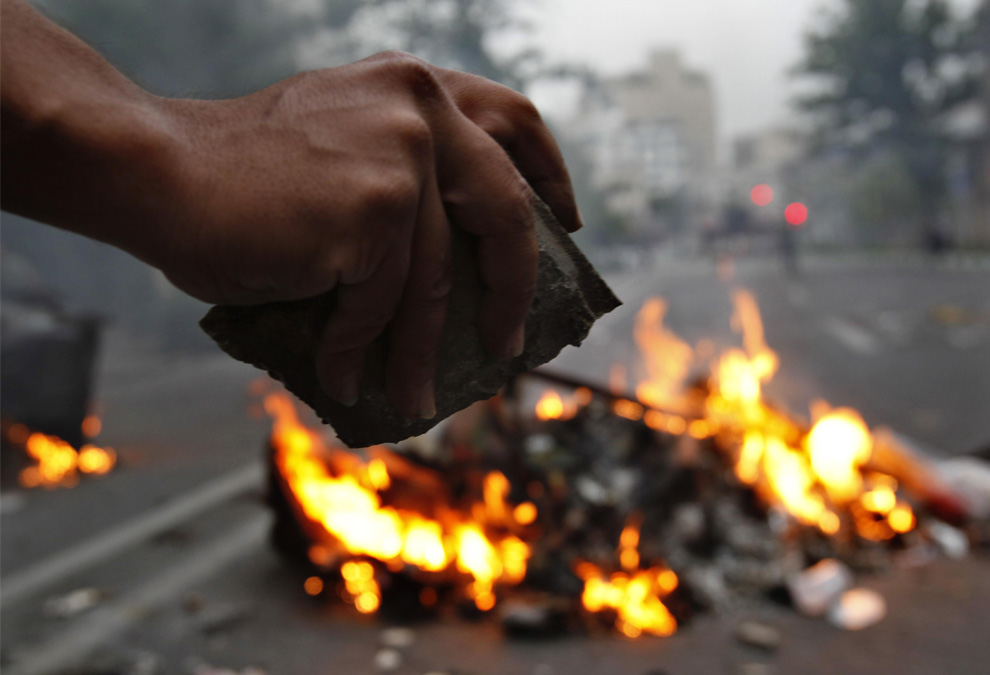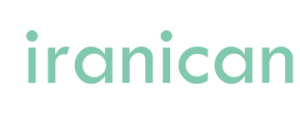 Guest Contributor: Masoud Shafaee
Guest Contributor: Masoud Shafaee
It is now clear that the protests and resistance in Iran are no longer about the June 12th election. While a select few are talking of regime change and revolution, the fact is that the current situation resembles more of a civil rights movement. In many respects, this reality mirrors the choice Iranian voters faced in the months and weeks leading up to the presidential election: one path lead to a more pragmatic and measured administration staffed with experts and technocrats, while the other aimed at cementing the incumbent status quo, an administration deeply entrenched in a fundamentalist ideology and driven by an almost-paranoid strand of populism and nationalism.
In the wake of the election, the contrast between these two paths has become ever more striking. Reza Aslan has compared one outcome as leading to a more open society—a China-type model of governance—and the other as leading to a police-state more along the lines of North Korea. The comparison is accurate. But at present, what is perhaps most important to note is that Iran’s Supreme Leader is in a state of paralysis, unwilling (or unable) to let the country go in either direction.
The longer this state of uncertainty lasts, the more harmful it will be to the regime. Khamenei seems to find himself in a Catch-22, one which he himself created by so quickly endorsing the election results without first gauging the public’s willingness to accept them. He must now either crush any attempts that challenge his and Ahmadinejad’s authority—and this inevitably means measures far greater than what we have already seen, targeting both Mousavi and Karoubi directly but also those in the clerical establishment who have voiced displeasure with the election’s fallout—or he must yield to public sentiment and abandon his support for Ahmadinejad’s illegitimate victory. Either way, he must choose. The longer there is uncertainty (or “hope,” from the protester’s perspective) as to which direction the country is headed, the more difficult it will be for the regime to get a handle on the situation and ultimately come out on top.
Neither outcome fares well for Khamenei. If he is unrelenting in further quashing the uprising (which every indication suggests that he is), his legitimacy will be further damaged in the eyes of influential clerics both inside and outside Qom. Constitutionally, the Supreme Leader is supposed to stay above the political fray—not become enmeshed in it. This is significant because the Assembly of Experts (headed by Akbar Rafsanjani, Iran’s de facto number-two and strong backer of Mousavi) has the power to remove Khamenei from power with a two-thirds vote, should there be a crisis of confidence in his ability to lead. Although such an outcome is unlikely, Rafsanjani has been reportedly playing minority-whip in Qom the past few weeks and gauging how much support there is for such an ouster. (There have even been rumors of possibly amending the constitution to replace the position of Supreme Leader with a three-cleric Leadership Council.) In any event, Khamenei must be careful to not turn his fellow clerics against him. A select few have already begun criticizing Khamenei by name in public speeches and sermons, an unequivocal red-line that had never been crossed in the Islamic Republic’s thirty-year history up until the last month.
If he is to give into building pressure, however, his legitimacy will be weakened nonetheless. The position of Supreme Leader is more than the leader of the Islamic Republic; it carries with it divine implications. Under the doctrine of velayat-e-faqih, he is essentially carrying out God’s rule on earth. By coming out so early and forcefully—not once, not twice, but now three times—and stating that Ahmadinejad is Iran’s president and that there is no room for compromise, Khamenei has essentially painted himself into a corner. If he is to budge, then his will can no longer be said to be God’s will. In a position labeled “Supreme,” any concession will render him vulnerable to further attack.
And so despite the brutal crackdown on demonstrators and the relative calm found in Tehran’s streets, the leadership is still trapped between these two paths. To be clear, the regime has not unleashed its full force. Mousavi and Karobui’s newspapers have been shut down, but neither has been incarcerated. In this respect, the regime again faces a conundrum: easing restrictions on the opposition and the movement will regain its traction and coordination, while arresting Mousavi risks creating a Mosadegh-type icon out of him. Worse yet, his death would almost certainly make him a martyr in the eyes of many Shi’aa Iranians. (Mousavi has already stated that he has prepared himself for martyrdom—in itself a rebuke to Khamenei’s purported special relationship with God.)
Hence Mousavi having been kept on a tight leash, neither free nor muted, largely unable to leave his home while still able to publicly reject Ahmadinejad as Iran’s president. Meanwhile, despite mass unwarranted arrests and wide-ranging human rights abuses, many of those arrested have been freed. The regime seems to be trying to use fear and intimidation to teach protestors a lesson, as it were, rather than completely crushing their movement with all-out violence. Perhaps this is because it knows that it cannot burden the risks that the latter option carries. No doubt, memories of 1979—when the clerics were the ones leading the resistance—are still fresh.
Looking forward, the 18th of Tir (9th of July) will be a telling day. This marks the ten-year anniversary of the crackdown on the only other major uprising in the history of the Islamic Republic, and it coincidentally (and conveniently) comes as the regime is grappling with the current crisis. Although the now-famous cover of the Economist read “Iran’s Second Revolution?” that fateful week in 1999, former reformist president Mohammad Khatami ultimately—and much to the dismay of his supporters—ended up backing the regime, “disowning” protestors, and refusing to condemn a nighttime raid at Tehran University that left as many as 17 students dead. The reform movement was never quite the same after that, with many regarding Khatami as simply “the mullah who smiled.”
One can only imagine where things would stand today if it were Khatami who had been cheated out the 2009 presidency. He was the initial reform candidate and only withdrew his name when Mousavi entered the race. Unlike Khatami a decade earlier, Mousavi is refusing to back down. Indeed, he is challenging the regime head-on. Khatami, for his part, seems to have had time to reflect during the last ten years, as he just publically declared Ahmadinejad’s “victory” as a coup d’état.
It will be interesting to see what (if any) protests manifest on the day of this anniversary. Ever since the regime instituted martial law, protests have been small, infrequent and sporadic. With a common day and theme to rally around, and without the need of SMS or twitter to organize, Tehran may see its largest demonstrations since Khamenei’s threatening Friday sermon two weeks ago. On the other hand, with thousands still hospitalized and incarcerated, there may be few brazen enough to spill onto streets that are sure to be packed with Basij and Sepah forces waiting in anticipation. This will be the best barometer thus far of whether the resistance has gone entirely political and behind-the-scene, or if the people are still willing to directly confront the regime and en masse.
Whatever ends up happening in the weeks and months ahead, one thing is certain: Iran’s social and political landscape will never be the same. If Ahmadinejad is to survive this challenge to his authority, it is unclear how he will be able to effectively function as president with the vast majority of Iranians seeing his presidency as illegitimate. With inflation already topping 20% prior to the election, he could hardly afford a deepening recession in the country. The impact that the protests have had and that a possible national strike could have on the country’s economy only goes to underscore this point. Regardless of Ahmadinejad’s unique statistical philosophy, Iran’s economy is undoubtedly in tatters. He would have little wiggle room from a populace that already wants him gone.
In the event that Ahmadinejad is removed from power, a functioning Mousavi government is equally difficult to imagine. Khamenei has already warned that Mousavi would be personally responsible for any violence stemming from protests, while his aide-de-camp and editor of the Kayhan daily more recently labeled the former Prime Minister a “US agent.” Mousavi, for his part, has directly and repeatedly challenged the authority of the Supreme Leader by refusing to concede defeat. How the two would be willing—or able—to reconcile these differences is hard to imagine.
Further still, the vast ranks of Basij and Sepah militia have a personal (read: fiscal) stake in an Ahmadinejad administration, stemming from lucrative government contracts and positions received during his last term. (Ahmadinejad is himself a former member of the Sepah Pasdaran.) Having seen their influence and clout increase during the last four years, it is unlikely that they will relent easily, regardless of what either the regime or clerical establishment may dictate otherwise. How loyal would the paramilitary apparatus be to an Islamic Republic with Mousavi as president? If a recent Basiji letter urging the country’s top prosecutor to convict Mousavi of treason is any indicator, not very, and that is perhaps the most ominous indicator of what may lay ahead.

1 comment
Great analysis. One of the best I’ve read so far about the post-election events in Iran.